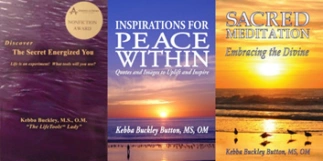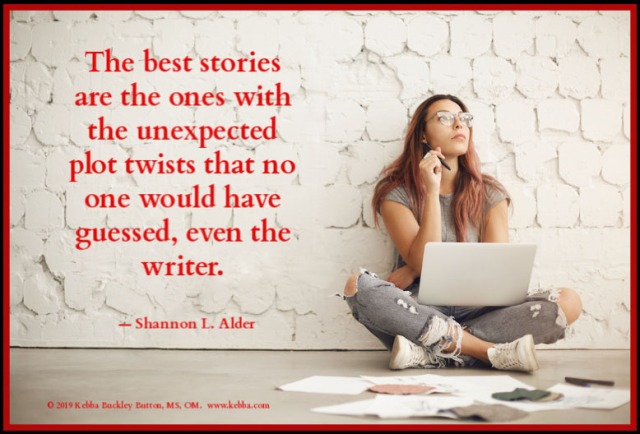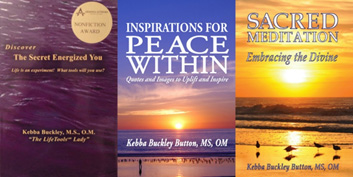Predictability Can Kill a Great Story
by Marcus A. Nannini
As an author, I strive to avoid predictability. My two most recent works were a challenge in  that regard because the titles made it clear there would be a significant event at some point in the book, and as the reader approached the event, I’d better have a riveting continuation to the story. To complicate matters, both books were nonfiction. The facts are the facts, so the trick is in the presentation.
that regard because the titles made it clear there would be a significant event at some point in the book, and as the reader approached the event, I’d better have a riveting continuation to the story. To complicate matters, both books were nonfiction. The facts are the facts, so the trick is in the presentation.
I admit, I never worried about the predictability factor, even though they were true stories because I knew I had adequate action sequences that allowed me to maintain the pacing, despite the title giving away the timing of the inciting incident. I could hide the details in the set-up for the next action sequence.
In Left for Dead at Nijmegen, the title incident occurs with about 75 percent of the story remaining. At least one reviewer mentioned he knew the subject of the book “would be left for dead,” yet the event itself was immediately followed by a succession of hair-raising scenes. He said it was as if the left for dead scene was just “a teaser.” In retrospect, he wished he’d taken an overnight break after reading the prior chapter, for once he reached the inciting incident, he discovered it was but one of an extended series of “riveting” incidents.
When it comes to a work of fiction, the author’s imagination is not restrained by the need to stick to the truth. As a pertinent aside, pay attention to your subtitle but don’t marry yourself to it. A good approach for a subtitle is to consider it tantamount to a movie logline. A logline must be short, yet contain enough information to convince a person to plunk down $14.95 to watch the movie in the theatre. As authors, our movie theatre is the nearest bookseller.
A book with a title that seemingly gives the story away is Joyce Lefler’s nonfiction work, From Miracle to Murder. The miracle happens very early in the book, as does the murder. What follows from what a reader might infer as the climactic moment is only the beginning of a dizzying series of events. The truth can keep the reader deeply involved when it flows well. Pacing is what it’s all about. Be it fiction, science fiction, nonfiction, or poetry, pacing keeps the reader interested and turning the pages, anxious for more.
A history book can read as if it is an accountant reciting facts or it can tell a story, much like the historian Antony Beevor does. He is a masterful storyteller of historic events who never loses sight of the fact he must maintain the pace. But even Beevor can stumble now and again from the weight of the facts that need to be conveyed. And without facts, a book becomes fiction.
I remember, as a student, being very excited to write a book report concerning the Fall of Constantinople. The book was very long and contained a tremendous quantity of information I wanted to relay. In the end, I loaded the report with too many facts, lost the pacing, and was hugely dejected to receive a B+ with a note from my teacher: “Too much detail.” I never made that mistake again. Detail can kill, or it can score you a killer book. There is a fine, but very important line between too much detail, not enough, and just right.
Some authors are known for their detail. Highly descriptive scenes that take the better part of the first chapter to describe a single room are not most people’s cup of tea. It is especially difficult for me to wade through such exposition when the room description precedes the introduction of character #1 to the point said character doesn’t appear until chapter two!
There is a market for the slow-to-build storyline, but the over-detailed, sluggish-starting story is not for the majority of readers. Because I desire to sell my books in large quantities, I paint a water-color picture of the scene and permit the reader to imagine the details as suits their comfort level.
Critical details can always be filled in, as needed. The action counts more than the number of goats nibbling on the scrub grass in the background, of the specifics of each variety of flower growing in the garden.
You’re correct when you conclude I’m not going to read a book that fails to grab me at chapter one, unless it’s my book club’s choice of the month. I make no apology. I have a short attention span, as does the majority of the American book-purchasing public. Another point: never lose track of the fact that we, as authors, are competing with electronic diversions.
My characters are described with just enough detail to set each one apart. I leave it to the reader to form their own detailed picture in their minds. I like to think of myself as a sketch artist with words. As the author, my descriptions resemble the manner an artist uses to sketch a “Wanted” poster. Of course, in my works of nonfiction, I have the luxury of actual photographs for all the main characters.
While character and scene descriptions establish images, it is the action taking place that keeps a reader engaged. Though action for the sake of action is unlikely to hold the reading audience for long, a book isn’t going to end in 90 minutes as a movie would. We need to keep our audience reading for hours, not minutes. We must keep them wondering what’s going to happen next. And that’s where I look ahead as the writer and consider what a reader might be expecting. Based on that, I can logically set up a basis to provide the unexpected.
The story that remains to be told, at any point, absolutely must establish a basis for what is to come, no matter how subtle the basis might be. Yet the future events cannot be so far off course as cause any surprise twists that seem to have been contrived. It is more than simply avoiding the predictable, it is creating a story line with subtle intangibles that need to be worked into the story without diminishing it.
For example, what might appear as a chance meeting between your protagonist and a character who seemingly has no place in the story can set up the re-introduction of said character as the primary antagonist in Book #2 of the series. So long as that character appears in a scene that is pertinent to the current book, you can introduce what might appear to be a random player. The savvy reader will recognize what you are doing and begin looking forward not only to the end of your current book, but also to the next book in your series.

A surprise ending with no foundation is worse than no ending at all. There need to be elements of the story inherent in the surprise ending. I rarely introduce a character in my fiction books just to make it through a scene. The characters are, to me, a bundle of loose ends, and I am the expert at knot tying. Loose ends are different than open ends. An opening that allows room for the next book in the series is different than a loose end in the story line. Loose ends need to be tied up. Openings in the story line make for the beginning of a series. Know the difference. And by all means, keep the story moving.
We need to be unpredictable, but there must be a basis for the unpredictable events.
________________
Marcus Nannini began his journalistic career when he published his own newspaper in the  sixth grade, charging 25 cents for the privilege of reading the only printed copy of each edition. During his undergraduate years, Nannini was a paid reporter and worked three semesters as the research assistant for journalism professor and published author Richard Stocks Carlson, Ph.D. Nannini is a life-long history buff with a particular interest in World War II and the Pearl Harbor attack. His continuing curiosity over several Japanese aerial photographs and the turtling of the U.S.S. Oklahoma lead him to write Chameleons, first as a screenplay and now as a full-length novel. His latest work, Left for Dead at Nijmegen, has recently debuted to great regard, internationally.
sixth grade, charging 25 cents for the privilege of reading the only printed copy of each edition. During his undergraduate years, Nannini was a paid reporter and worked three semesters as the research assistant for journalism professor and published author Richard Stocks Carlson, Ph.D. Nannini is a life-long history buff with a particular interest in World War II and the Pearl Harbor attack. His continuing curiosity over several Japanese aerial photographs and the turtling of the U.S.S. Oklahoma lead him to write Chameleons, first as a screenplay and now as a full-length novel. His latest work, Left for Dead at Nijmegen, has recently debuted to great regard, internationally.










 sixth grade, charging 25 cents for the privilege of reading the only printed copy of each edition. During his undergraduate years, Nannini was a paid reporter and worked three semesters as the research assistant for journalism professor and published author Richard Stocks Carlson, Ph.D. Nannini is a life-long history buff with a particular interest in World War II and the Pearl Harbor attack. His continuing curiosity over several Japanese aerial photographs and the turtling of the U.S.S. Oklahoma lead him to write
sixth grade, charging 25 cents for the privilege of reading the only printed copy of each edition. During his undergraduate years, Nannini was a paid reporter and worked three semesters as the research assistant for journalism professor and published author Richard Stocks Carlson, Ph.D. Nannini is a life-long history buff with a particular interest in World War II and the Pearl Harbor attack. His continuing curiosity over several Japanese aerial photographs and the turtling of the U.S.S. Oklahoma lead him to write 













 also is an ordained minister whose passion is helping people find their Peace Within. She is the author of the award-winning book, Discover The Secret Energized You, available on Amazon, plus Inspirations for Peace Within: Quotes and Images to Uplift and Inspire. IPW is available on Amazon in full-color glossy format. Her newest book is Sacred Meditation: Embracing the Divine, also on Amazon in full-color. For full-color PDF versions, contact her office. For an appointment or to ask Kebba to speak for your group:
also is an ordained minister whose passion is helping people find their Peace Within. She is the author of the award-winning book, Discover The Secret Energized You, available on Amazon, plus Inspirations for Peace Within: Quotes and Images to Uplift and Inspire. IPW is available on Amazon in full-color glossy format. Her newest book is Sacred Meditation: Embracing the Divine, also on Amazon in full-color. For full-color PDF versions, contact her office. For an appointment or to ask Kebba to speak for your group: 
